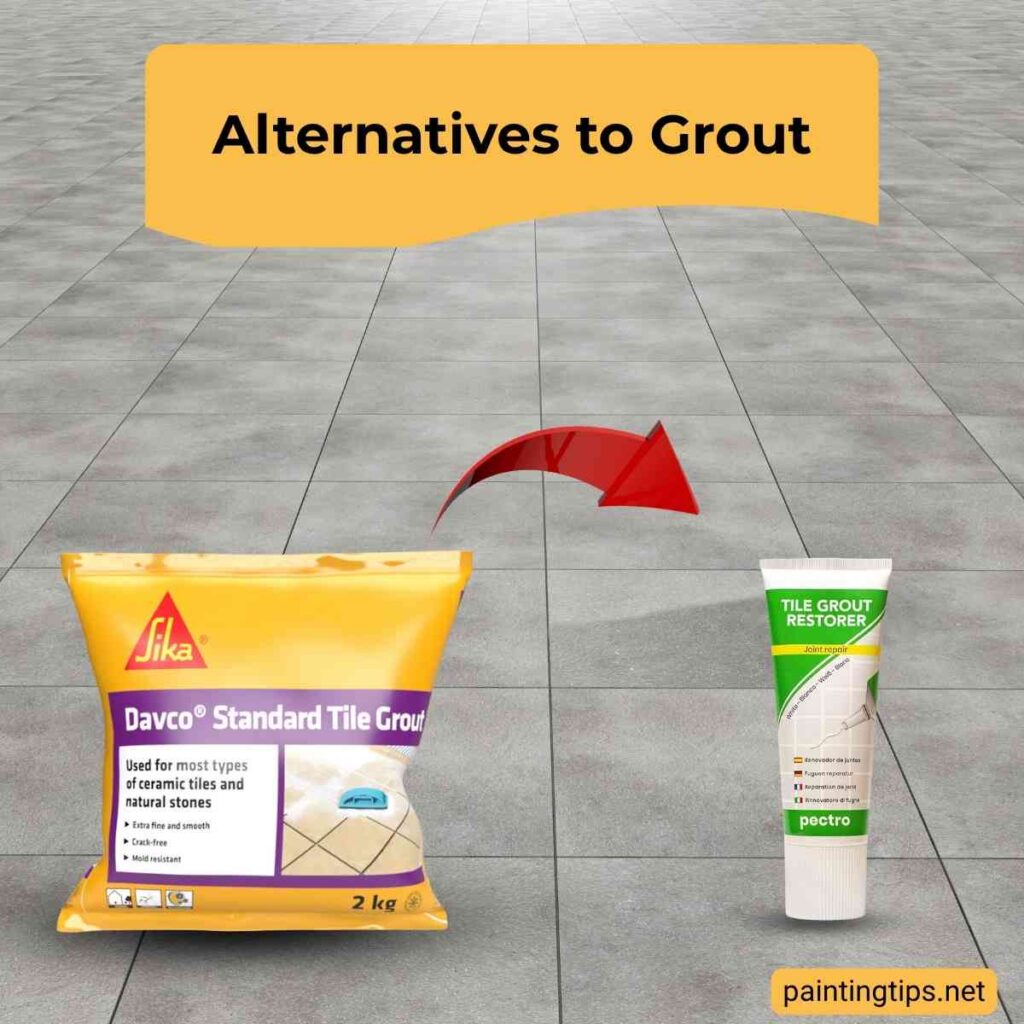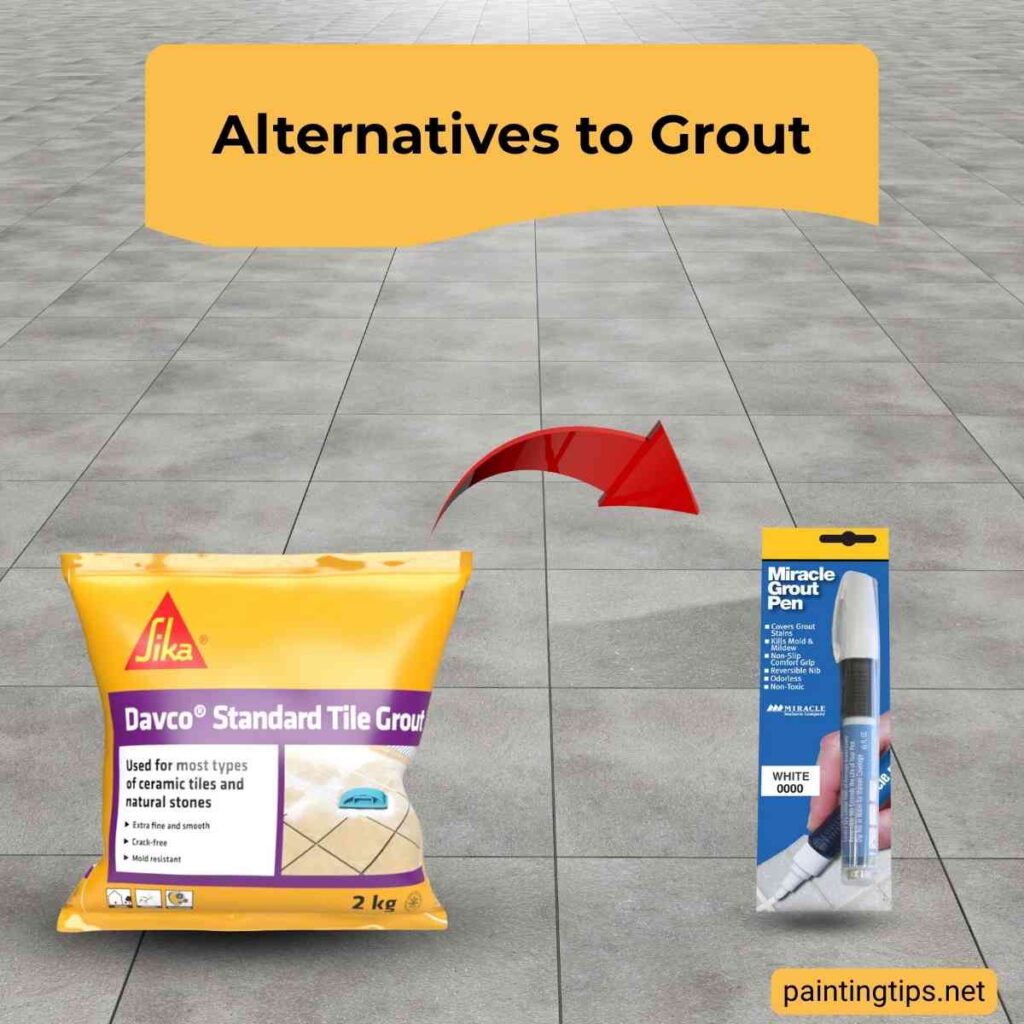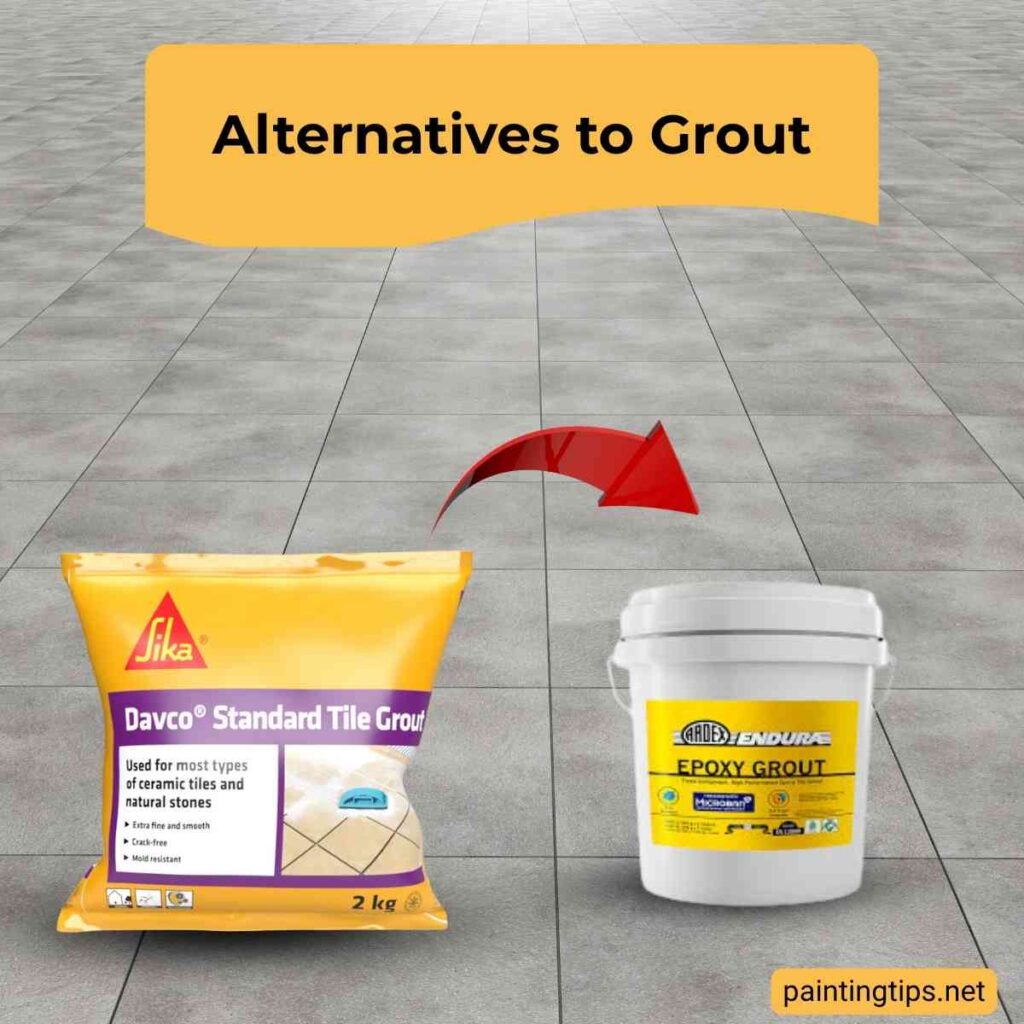If you’re looking to refresh your tiled surfaces without the hassle of removing and reapplying traditional grout, there are plenty of alternatives to grout that can save time, look great, and even last longer. From quick fixes to more durable solutions, a grout substitute can be just what you need for bathrooms, kitchens, or any tiled area in your home. This guide explores the best alternatives to grout, helping you find the right solution for your project.
Best Grout Substitutes
Tile grout is one of the most common materials used to fill the gaps between tiles. It keeps tiles firmly in place, prevents water from seeping underneath, and gives the surface a clean, uniform look. Grout is also budget-friendly for large areas, making it a practical choice for bathrooms, kitchens, and floors.
However, it’s not your only option. There are more durable, stylish, and easier-to-apply alternatives that can refresh your tiles and even elevate your home’s appearance. Here are some of the best grout substitutes you can try:
1-Grout Repair Tubes (Pre-Mixed Grout)

Grout repair tubes are one of the quickest and most effective grout substitutes for small areas. They come in toothpaste-like tubes and are easy to use—simply squeeze the filler into the gaps you want to refresh, and wipe off the excess with a damp cloth before it dries. These alternatives to grout work best for small repairs or partially damaged areas, such as in bathrooms or kitchens. While white is the most common color, many brands now offer gray and beige options to match your tiles better.
2-Grout Pen

Grout pens are an easy and cost-effective way to refresh dirty or discolored grout lines. Instead of removing and replacing old grout, you can simply draw over the existing lines. These pens come in various colors like white, gray, and black, allowing you to customize the look of your tiles. They’re great for quick touch-ups and DIY projects—just shake the pen, press down the tip to release the paint, and trace along the grout lines.
3-Tile Gap Tape (Caulk Strip)

Tile gap tapes are lesser-known but visually striking alternatives to traditional grout. These waterproof, self-adhesive strips can be applied directly between tiles on both walls and floors. They come in metallic shades like silver, gold, and gray, adding a decorative shine to your tiles. If you’re aiming for a unique, modern look in your bathroom or kitchen without messy grout work, strip tapes are a perfect choice.
4-Glitter Grout (Sparkle Grout)

Glitter grout fillers are ideal for those who want something both decorative and functional. These products can be used to cover existing grout or fill small gaps between tiles, adding a sparkling finish that catches the light beautifully. They’re often sold online in ready-to-use form and can be applied without professional help. Plus, they’re water-resistant and perfect for spaces like bathrooms or accent walls that could use a bit of shine.
5-Polyurethane Grout

Polyurethane grout is a high‑performance alternative to traditional cement‑based tile grouts and sealants. It consists of a polyurethane resin that expands or fills voids and cures into a flexible yet durable barrier. One of its standout features is exceptional durability: once cured, polyurethane grout can resist movement, vibration, moisture and temperature changes far better than many standard grouts. For example, formulations labeled as hydrophobic polyurethane exhibit low water absorption and high mechanical strength, making them very suited for long‑term service in humid or wet areas.
You’ll often find polyurethane grout used in challenging environments where a standard grout might crack, deteriorate or allow leaks. Typical uses include waterproofing basements, tunnels, retaining walls, or heavy flooring systems where structural movement is likely.
When should you consider polyurethane grout for your tile or large‑surface project? Use it when you have:
- A floor or wall where the substrate shifts or moves slightly (for instance due to temperature change or expansion/flexing).
- A wet or damp environment (bathrooms, shower walls, outdoor tile areas) where moisture exposure is heavy and you want extra protection.
- Large spans or commercial grade installations where long service life is expected and maintenance‑free performance is a priority.
- Areas where standard grout has failed repeatedly, or where you want a “premium” solution upfront rather than frequent repairs.
In short, polyurethane grout is more robust and offers better longevity and flexibility than standard grout. However, it tends to cost more and may require more careful installation (as it often comes as a two‑component system or requires specific moisture/temperature considerations).
6-Epoxy Grout

Epoxy grout is a premium, high‑performance alternative to traditional cement‑based tile grouts. It’s typically a two‑part system composed of epoxy resin paired with a hardener or filler, which cures into a dense, non‑porous material.
Why It’s So Durable
- Once cured, epoxy grout resists moisture, chemical exposure, stains, and heavy traffic far better than standard grout.
- Because it is essentially non‑porous, it doesn’t absorb water or liquids the way cement‑based grouts do, which reduces the risks of mould, mildew, and discolouration.
- Epoxy grout maintains its colour consistency and structure over time, meaning the finished look remains sharp and clean for years.
Where It’s Best Used
- Wet areas like bathrooms, showers, and pool decks where waterproofing and durability matter.
- Commercial or high‑traffic floors (restaurants, kitchens, retail) where spills, cleaning chemicals, and wear‑and‑tear are frequent.
- Any tile installation where high performance is expected and long maintenance‑free life is a priority.
When You Should Consider It
- If your existing grout is cracked, stained, or failing in wet or high‑use zones.
- If you’re doing a renovation and want a top‑tier result without frequent repairs or sealing.
- When appearance matters — for example light‑coloured tile lines, glass mosaics, or accent walls — because epoxy keeps its look.
- If you’re comfortable investing a bit more upfront for longer lifespan, easier maintenance, and superior performance.
Note: While epoxy grout is excellent, it often costs more and requires more careful application than standard grout. The mixing, working time, and cleanup must be managed properly. “This article may also interest you: How to clean grout between tiles.”